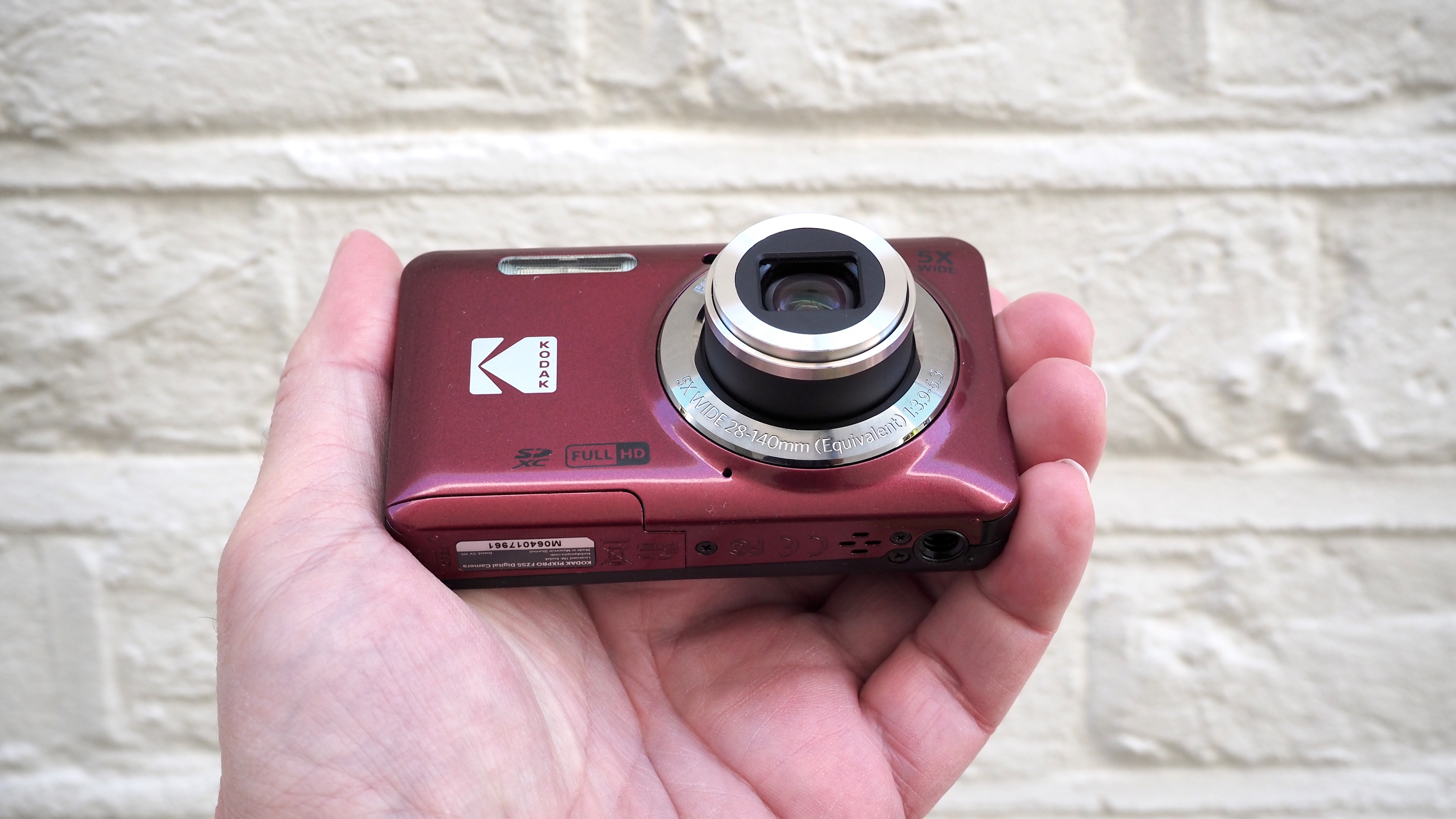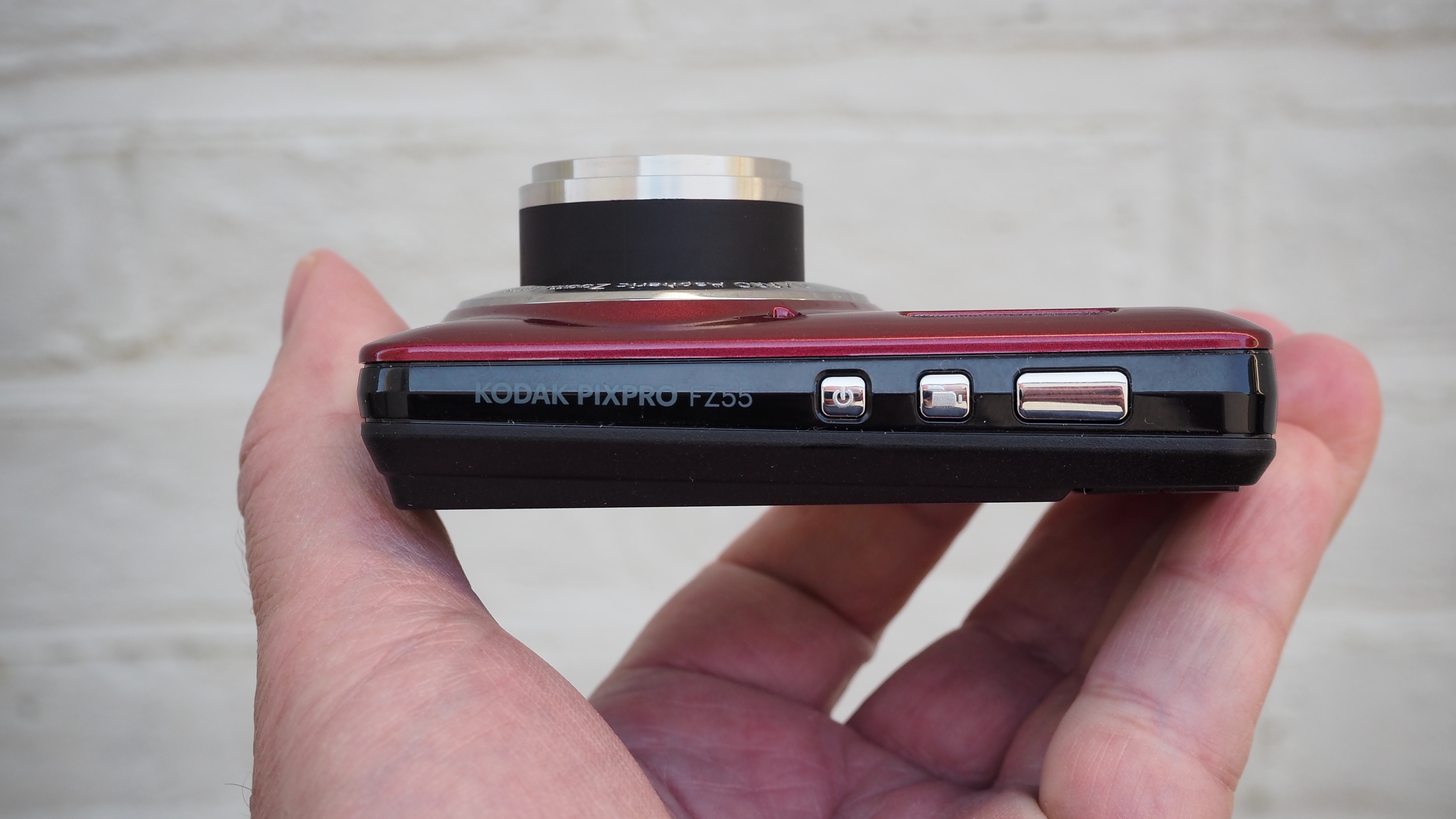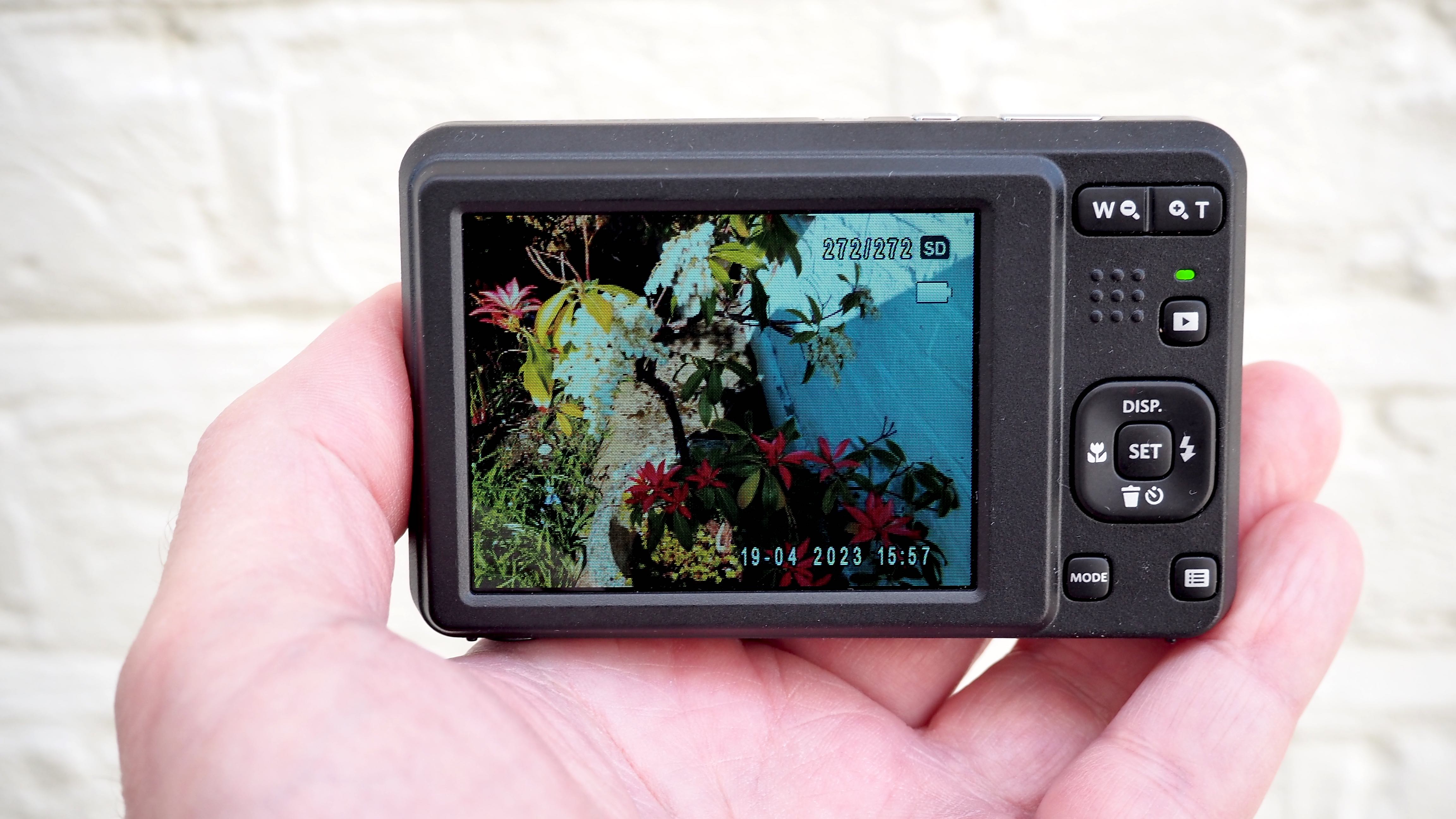
Conventional wisdom has it that placing cameras in mobile phones has led to a gradual decimation of the traditional camera market. And that basic point-and-shooters like the Kodak Pixpro FZ55 have been the hardest hit by the smartphone’s rise.
As a result, the vast majority of new camera releases are now high-end interchangeable lens models, and it’s been a fair while since we’ve seen a fresh batch of entry-level digital compacts suitable for absolute beginners. So the question is, is there still a market for this type of camera? Kodak’s brand licensee JK Imaging obviously thinks so, and, with most other manufacturers having exited this portion of the market, perhaps there is a new niche to be carved?
• Read more: Check out our guide for the best point and shoot cameras.
With that in mind, how does this unassuming-looking compact actually handle and perform?

Specifications
Sensor: 16 megapixel
Sensitivity range: Automatic
Video: Full HD 1920x1080 pixels
Lens: 5x optical zoom, 28-140mm equivalent
Monitor: 2.7-inch LCD
Viewfinder: No
Battery life: Up to 200 shots
Dimensions: 91.5x56.5x22.9mm
Weight: 106g body-only
Key features
Simple to operate point-and-shoot digital cameras have long held appeal for entry-level photographers, the young, the old, and the family market in general, as well as anyone who appreciates a conveniently compact size. The Kodak Pixpro FZ55 is certainly diminutive, being broadly the dimension of a credit card and the width of a finger, which ensures it’ll readily slip into any pocket or purse. You may not want to hide it away though, as our review sample came in an attractively glossy red rust color.

While, unlike a smartphone, this camera can’t directly upload our photos and videos to the Internet – there’s no built-in Wi-Fi or Bluetooth, just a USB cable supplied for PC connectivity, plus the ability to insert and remove an optional SD card – it does offer one advantage over a smartphone in possessing a 5x optical zoom, as opposed to just a digital alternative which crops the image.
Featuring an automatic lens cover to protect its glass, the Kodak’s lens is retracted within the camera body when the FZ55 is powered down, thus ensuring maximum compactness. A slender lozenge-shaped built-in flash broadens the range of scenarios in which the camera can be used, as does 63MB of internal memory to get us started out of the box. Inserting an SD card supplements this and is an essential purchase alongside the camera.
Build & Handling
While the Kodak Pixpro FZ55 may be diminutive and slender, the build quality feels reassuringly solid, with its most delicate aspect being the spring-loaded plastic cover protecting the slots housing its lithium-ion battery and memory card. We don’t get a mains charger bundled in the box, just a USB lead that allows us to add our own mains plug, or charge the device via an available USB port on a desktop or laptop computer. Also supplied is a wrist strap that threads through an available lug on the camera’s side, just below the vacant USB port, which doesn’t have a rubber cover, meaning that pocket lint, fluff, and biscuit crumbs may well intrude over time.

We were struck by how much this Kodak’s appearance and operation is exactly the same as the kind of compact digital camera that was being sold everywhere 10 to 15 years ago, and has largely disappeared since. Navigating its functions is mostly via a very familiar multi-directional control pad on the backplate, to the right of a 2.7-inch LCD that takes up two-thirds of the rear. As we’d expect given the fairly basic nature of the device, there’s no eye-level viewfinder of either optical or electronic variety.
The zoom, modest though it is, is controlled via a thumb-operated rocker switch. Beneath this are dedicated shooting mode, menu, and playback buttons, while a dedicated video button nestles next to the power and shutter release controls on the top plate. Press this video button no matter what other shooting or program mode we may have manually selected and the FZ55 automatically begins recording a clip. Luckily the top plate buttons are partially recessed, so it’s less easy to hit them accidentally when handling the camera, with the main shutter release button being the largest of the three.

Performance
Using this camera is like the clock has been turned back to the mid-2000s – or that the world of technology has been in stasis since then. As well as its 5x optical zoom, the Kodak Pixpro FZ55 features an all-encompassing 28mm equivalent at its widest setting, reaching up to 140mm at maximum zoom, with stills and video both composed and reviewed via its 2.7-inch backplate LCD.

Video is of the Full HD variety rather than the now more commonplace 4K, but that’s always been acceptably the standard at this entry level. Effective stills resolution here is a quoted 16.76 megapixels from a bog standard 1/2.3-inch CMOS sensor, and, with maximum lens aperture being f/3.9, it’s no surprise the automatic flash fires when taking shots indoors, even in daylight. We can however turn it off ourselves if it gets annoying.
Battery life here is sufficient for a modest 200 photos, or an hour-and-a-half of Full HD video at 30fps before recharging is required. Just like any ‘old school’ point and shoot, we get sundry subject pre-optimized scene modes and the ability to press a button to achieve macro photography – here as close as 5cm from our subject.
As with any LCD screen, when using the camera in bright sunlight it’s very hard to see what’s displayed on the back screen; not only is it rendered very dark, but its resolution is so modest it’s hard to pick out detail. Given this, it’s no surprise to find the screen isn’t a touch screen. Safe to say that although screen brightness is manually adjustable to an extent, visibility is better indoors than out.

Though we weren’t expecting to be blown away by the image quality from this camera, in not expecting much we were pleasantly surprised. Colors are as bright and as rich as one would hope and expect of any product associated with the Kodak brand, and there’s a pleasing degree of detail in the snapshots.
It’s easy to get more critical, however. At maximum wide angle setting, we’re getting converging verticals, and, on a bright day, isolated instances of lens flare, but neither of these are overly distracting. Slightly more serious is that there is a noticeable fall-off in terms of sharpness into the corners of the frame, but busier subject matter will distract from this. Similarly, brighter conditions result in burnt-out highlights and images are generally softer towards the telephoto end of the zoom, even with the digital zoom function disabled.
Image blur is partly down to the camera being so small it’s tricky to hold good and steady to avoid the effects of hand wobble and camera shake. In fairness, there is actually a screw thread at the base of the FZ55 for optional tripod attachment, should we want to go that far to achieve a pin-sharp image.

Verdict
If you’ve ever wondered why don’t they make simple and affordable digital cameras like they used to? or are looking for an inexpensive starter option to gift to a son or daughter showing a fledgling interest in photography, who is nevertheless too young to be entrusted with a smartphone, then the Kodak Pixpro FZ55 will tick a couple of boxes that have been left empty for a while.
With the majority of camera manufacturers now focusing on much higher priced and more sophisticated interchangeable lens cameras of interest to the photo enthusiast, perhaps the best we can say is that the casual photographer who has otherwise been left to their smartphone now has a user-friendly alternative.
While we can’t imagine compact point-and-shoots like the FZ55 making a return en mass, as this is one of a very few such options out there, Kodak’s current license holder may well find a receptively niche audience in those seeking a camera putting simplicity and affordability first.
You might also like...
Apart from trawling the second hand options online, the competition at this level comes mainly from no-brand options. For those few manufacturers who do have a point-and-shoot camera still in their lineup, it is usually a reinforced toughened option which traditionally has commanded a premium for their near destruction-proof qualities. There’s no waterproofing or shock-proofing here on the Kodak Pixpro FZ55, but then the accent is purely on offering the essentials of a zoom lens, an imaging sensor, and little else. For other options see our guides to the best cameras under $100, and best cameras under $200.
Read more: Find out more with our guides to the best point-and-shoot camera, the best travel camera, and the best cheap camera.







